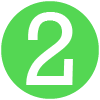Fundación Patronato de la Juventud Obrera is very much aware of the importance of the digitisation of schools as a process to create 21st-century schools and improve their academic results. We have been pioneers in the use of the “SELFIE” tool since 2018 and, after detecting the weaknesses we had and the educational and management opportunities offered by digitisation if carried out correctly, we began to create our own innovative methodology that would encompass the entire school. We soon understood that this strategy could cover more than the classroom, since it was necessary to achieve a global digitisation of the school that would promote new technologies and integrate the entire educational community in digital learning processes so that it would have a real impact on education.
Project Stages
Start of the porject
Organization and preparation
Execution and work
Closure of the project
Result of the project
THE METHODOLOGICAL GUIDE FOR THE CREATION OF THE ACTION PLAN FOR THE HOLISTIC DIGITALISATION OF THE SCHOOL, a tool that will not only help to implement an innovative digitisation process, but which will also guide it. A new methodological concept will be developed called: HOLISTIC EDUCATIONAL DIGITALISATION OF THE SCHOOL, based on a continuous process of analysis and improvement in the digitisation of the entire school which includes CLASSROOMS, SCHOOL and EDUCATIONAL COMMUNITY. The METHODOLOGICAL GUIDE will have resources to facilitate this digitisation process, such as free software, to manage the school itself, teacher and student training, connection and communication among the entire educational community. It will also allow any secondary school to implement this global educational process, matching the regulations and proposals established by the EU in the “SELFIE” tool, and including coordinated action and collaboration frameworks between the different departments of the school and proposals for the use of software and digital applications. The network created for this project will work together for twenty-four months, during which three Transnational Meetings will take place, activities will be carried out to create results, virtual mobilities, three student training mobilities, a joint teacher training activity, multiple learning activities (to check the results and train the participating students in new educational techniques) and, finally, a great Multiplier Event.

La primera salida intelectual (O1): LA PLATAFORMA VIRTUAL PARA LA CREACIÓN DE ESCUELAS EUROPEAS DIGITALES
Esta plataforma es una herramienta que no solo ayudará a implementar un proceso de digitalización innovador para los centros educativos, sino que también los guiará a lo largo del proceso para lograr una digitalización completa: desde la evaluación inicial del centro con la herramienta de la UE “SELFIE”, hasta logrando LA IMPLEMENTACIÓN DE UN PROCESO EDUCATIVO DIGITAL HOLÍSTICO DE LA ESCUELA. Además, esta plataforma digital contará con recursos para facilitar la digitalización de la escuela, como el software libre: para la administración de la escuela, para la capacitación de maestros y estudiantes, y para mejorar las relaciones y la comunicación entre toda la comunidad educativa.

El segundo producto intelectual (O2): la GUÍA METODOLÓFICA PARA CREAR UN PLAN DE ACCIÓN PARA LA DIGITALIZACIÓN HOLÍSTICA DEL CENTRO EDUCATIVO
Esta guía metodológica permitirá a cualquier escuela de secundaria implementar nuestro revolucionario proceso educativo holístico, siempre de acuerdo con las regulaciones y propuestas establecidas por la UE en la herramienta SELFIE, incluidos los marcos para la acción coordinada y la colaboración entre los diferentes departamentos de la escuela, y propuestas para el uso de software y otras aplicaciones digitales. Habrá tres reuniones transnacionales (reuniones cortas para evaluar y coordinar el progreso realizado y el Proyecto en sí), con 2 participantes por organización. Erasmus + Programme March 2019 Habrá tres actividades de intercambio de estudiantes (reuniones de 5 días para capacitar a los estudiantes en la creación y uso de los resultados intelectuales), con 5 participantes (4 estudiantes y 1 maestro) por organización.
